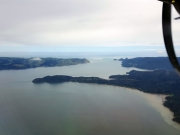Wetland Biodiversity: journey to a rare inland high country ecosystem.
IntroductionTake a breathtaking journey into the heart of the Southern Alps to explore Ō Tū Wharekai, a unique highcountry wetland area. Ō Tū Wharekai includes 12 lakes which are known as the Ashburton Lakes. This landscape has been carved by glaciers, creating stunning scenery which was made famous in the Lord of the Rings. Ō Tū Wharekai has habitat for native fish, trout, salmon, water birds, threatened native plants and aquatic and terrestrial invertebrates. The wetland area is one of the three Arawai Kākāriki project sites in New Zealand. This project aims to restore the ecological values of the most precious wetland freshwater sites in New Zealand. Wetlands play a vital role on planet earth so this trip will fit perfectly with big ideas like water, plants and animals, ecology, migration, threatened species and conservation. This trip is a 3-day journey to an isolated sub-alpine area, so be prepared for an adventure!
wb181-introduction-video.mp4 from LEARNZ on Vimeo.
LocationFollow the mighty Rangitata River, one of the braided rivers that helped form the Canterbury Plains. It flows 120 kilometres from the Southern Alps entering the Pacific Ocean 30 kilometres northeast of Timaru. The Lord of the Rings: The Two Towers, and The Return of the King were filmed in this valley, on and around Mount Sunday. Just downstream from Mt Sunday lies Ō Tū Wharekai, nestled amongst high country tussocklands and surrounded by the towering Southern Alps/Kā Tiritiri o te Moana. The Hakatere Conservation Park, centred on Ō Tū Wharekai, was opened in October 2007.
|
Field Trip Plan
- Planning Sequence: an example of how primary schools can make use of all field trip components for a 3-day virtual field trip - Word (652k) | PDF (311k) | Google Doc.
Monday 2 April |
Travel day: Join Andrew and the ambassadors as they make their way to Mt Somers to begin the field trip.
|
|
Tuesday 3 April |
Theme day 1: Wetland types, functions, and importance.
|
Wednesday 4 April |
Theme day 2: Cultural connections and historic influences on today's remaining wetlands.
|
Thursday 5 April |
Theme day 3: Wetland biodiversity and the threats faced.
|










